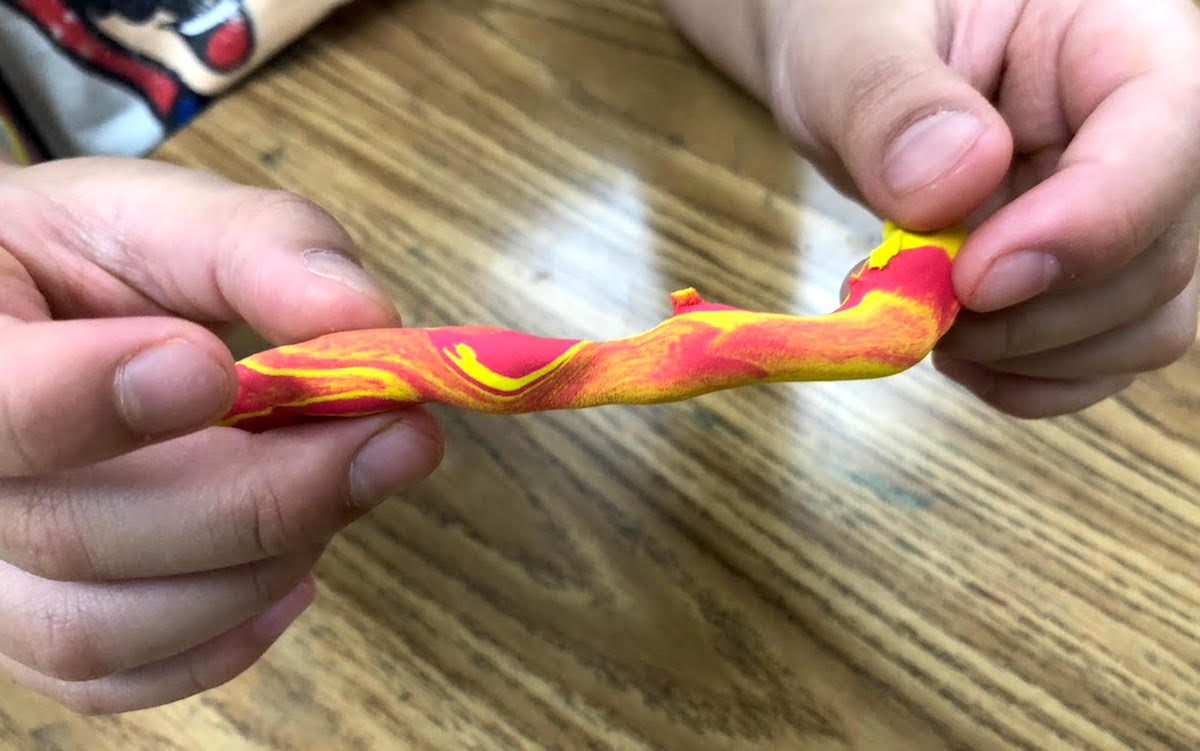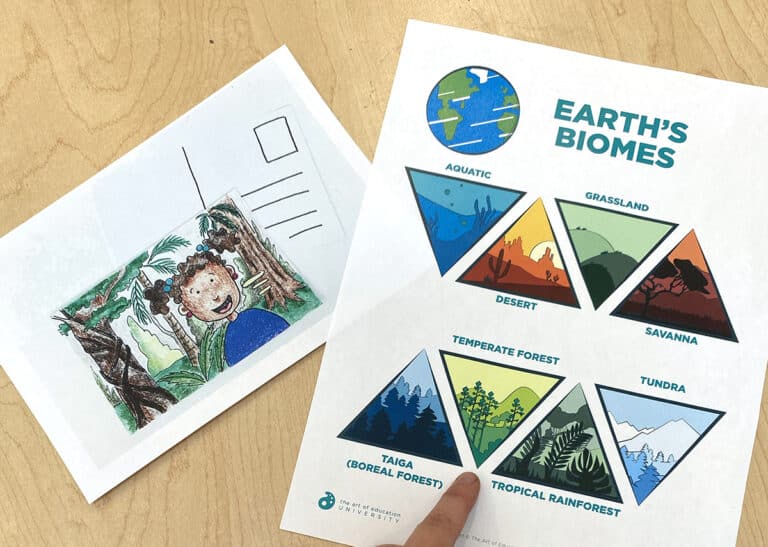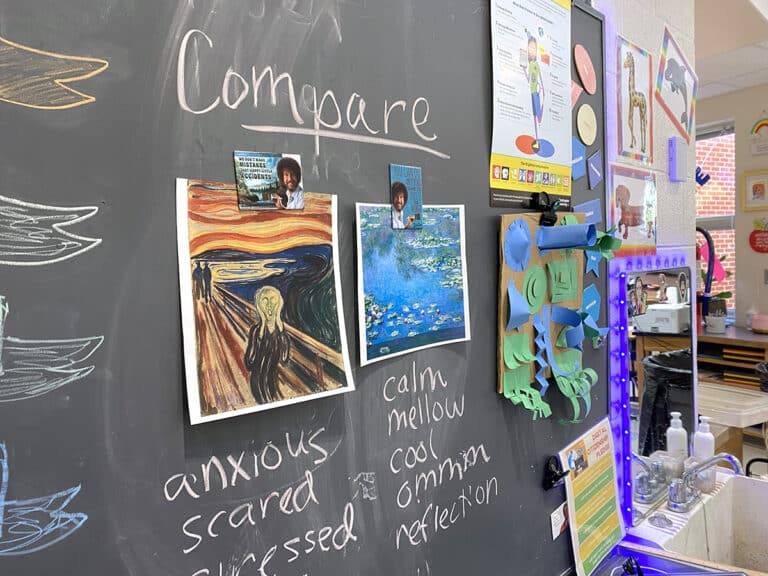It’s no secret that kindergartners have short attention spans, so it’s important to have lessons that keep them engaged. I love to introduce my kindergarten students to experiences that allow them to discover art concepts on their own. Letting students explore is especially fun when teaching about the primary colors and color mixing.
There are many art processes to teach students all about primary colors. Today, I want to share my favorites with you.
Here are 3 fun ways to teach your kindergarten students about primary colors!
1. Model Magic Mixing
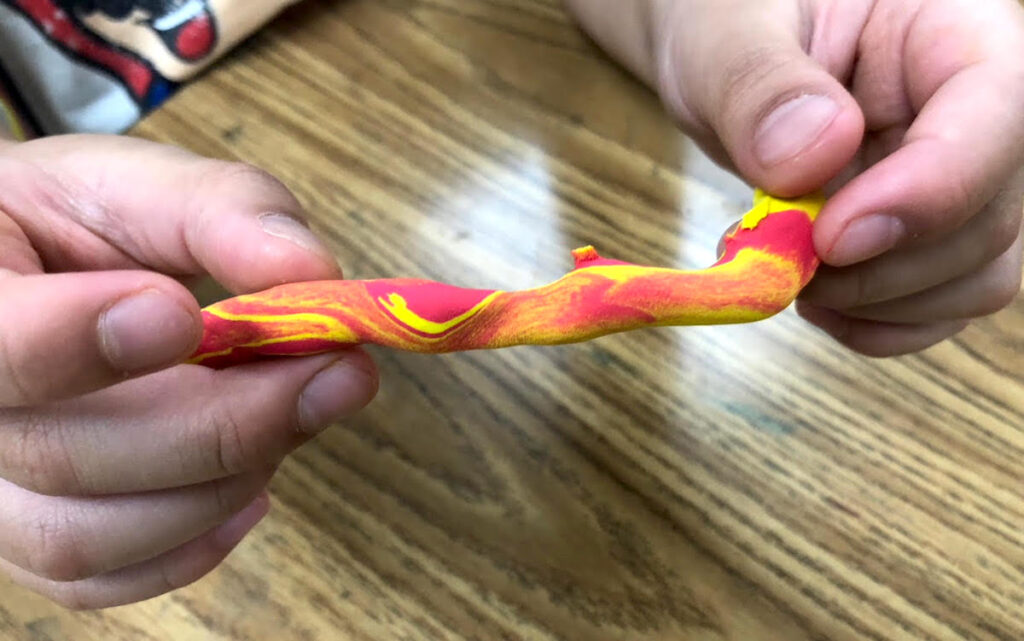
Using Model Magic is fun for everyone. It is squishy and soft, and it will grab your kindergarten students’ attention quickly. Giving your students an opportunity to mix the primary colors together is a great way for them to remember which colors make the secondary colors.
Materials
- Red Model Magic
- Yellow Model Magic
- Blue Model Magic
Procedures
- Introduce the primary colors to your students. I love to show OK Go’s “Three Primary Colors” song to get students excited and inspired.
- Discuss how there are three colors called the primary colors and that they are very special.
- Give each student small pieces of red and yellow Model Magic, and let them play with it. After a minute, tell them to mix them together if they haven’t already. You can advise students to mix them by kneading the colors together with their fingers.
- The students will begin to make all sorts of sounds of delight. You will have students realize that those two colors make orange. Discuss with students that orange is a secondary color.
- Repeat steps three and four with the combinations needed to make green and purple.
- Once students have all three secondary colors, you can allow students to continue to explore and play with the Model Magic.
Extension
When students are finished mixing their secondary colors, have them create a portrait or sculpture with their Model Magic.
2. Primary Color Sculpture
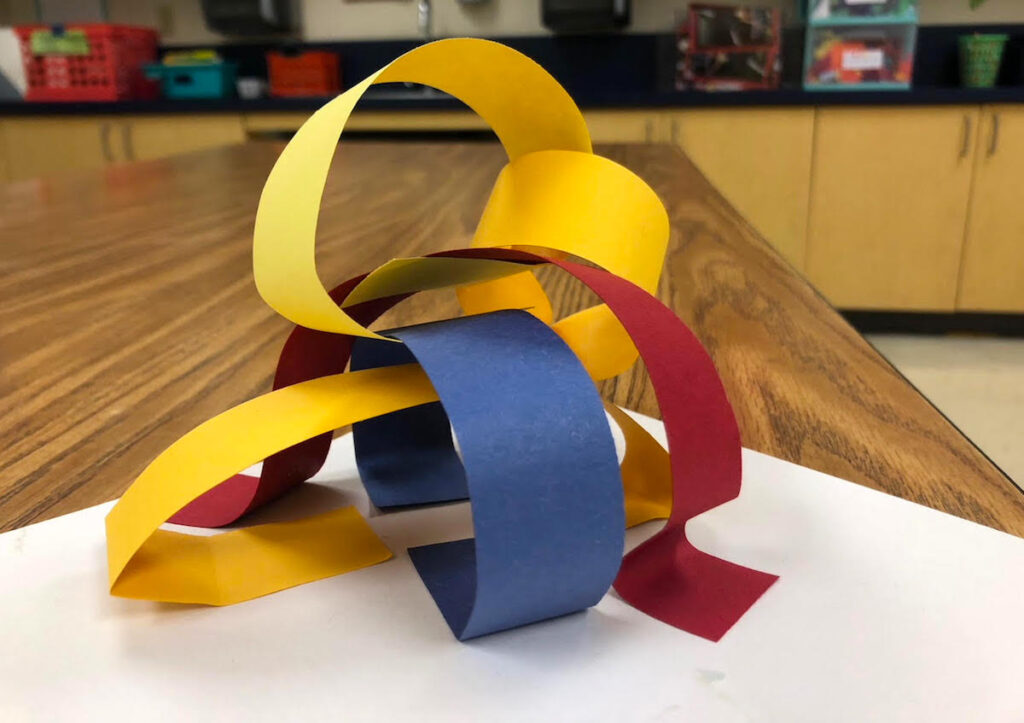
Students love to build, so why not combine learning about primary colors with sculpture? When I share this project, my students are engaged for the entire class period.
Materials
- 9″ x 12″ white or black construction paper
- 1-inch strips of red, yellow, and blue construction paper
- Glue sticks
Procedures
- Introduce the primary colors to your students. You can use the video mentioned in the first section, your favorite color book, or another method.
- Ask your students if they know what a sculpture is and have them share their answers.
- After your discussion, show the video, Sculpture with Jon Hamm, from the Word on the Street Podcast by Sesame Street to introduce them to a variety of sculptures.
- Let students know they are going to make a paper sculpture with primary colors.
- Demonstrate how to put glue at the ends of the paper strips to get them to stick to the paper. I like to tell students to count to ten when sticking down their strips.
- Give students the supplies and let them make their own sculpture.
This lesson could also be a group project per table if you want to limit the resources.
3. Primary Color Painting Explorations
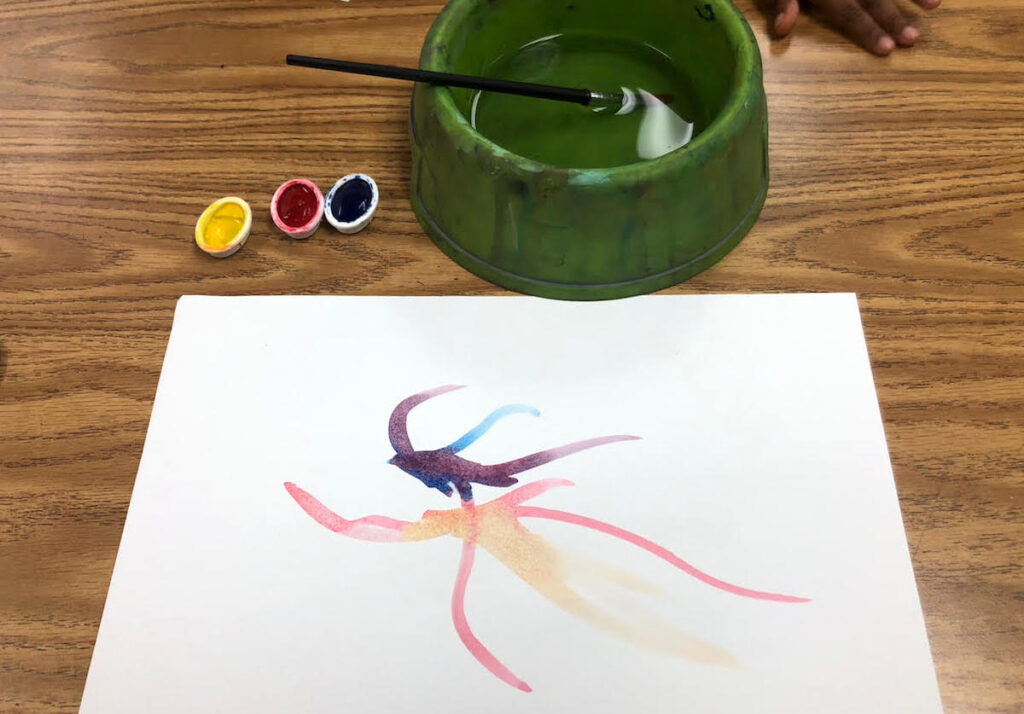
Painting with kindergarten be scary for some art teachers, but it can be done! Keep the supplies simple and have clear expectations for this lesson.
Materials
- 9″ x 12″ white 90 lb. drawing paper
- Red, yellow, and blue watercolor paint
- Water cups
- Paintbrushes
- Paper towels
Procedures
- Introduce the primary colors to your students.
- Give your students only red, yellow, and blue watercolor paint, so they aren’t tempted to mix up other colors.
- Demonstrate how to use the brush to get paint. If you want, you can demonstrate how to mix the primary colors into secondary colors. Or, you can let it be a surprise and let your students figure it out.
- Give students the supplies and let them begin painting.
- As students explore, they will learn what happens when they mix the primary colors and will share that knowledge with you and their peers.
These three methods are sure to keep your students engaged. Plus, by letting them explore, experience, and experiment, they are more apt to remember how to make the secondary colors themselves.
How do you teach your kindergarten students about primary colors?
Do you have a favorite resource you use when introducing primary colors?
Magazine articles and podcasts are opinions of professional education contributors and do not necessarily represent the position of the Art of Education University (AOEU) or its academic offerings. Contributors use terms in the way they are most often talked about in the scope of their educational experiences.
